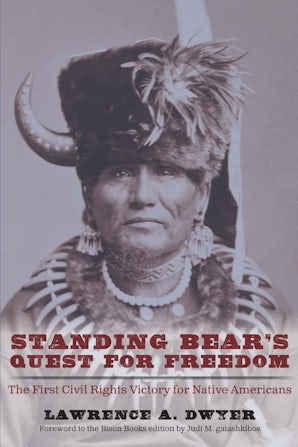“A history involving the law, government policy, treaties, and the military could so easily get mired in technical language. This book never does. Rather, it maintains a crystal clarity, nimbleness, and focus on what matters—the people, their humanity, and what happened. . . . [Dwyer] has created a vivid picture of the events before, during, and after the trial and never loses sight of the story’s true hero, Standing Bear.”—Judi M. gaiashkibos, executive director of the Nebraska Commission on Indian Affairs
